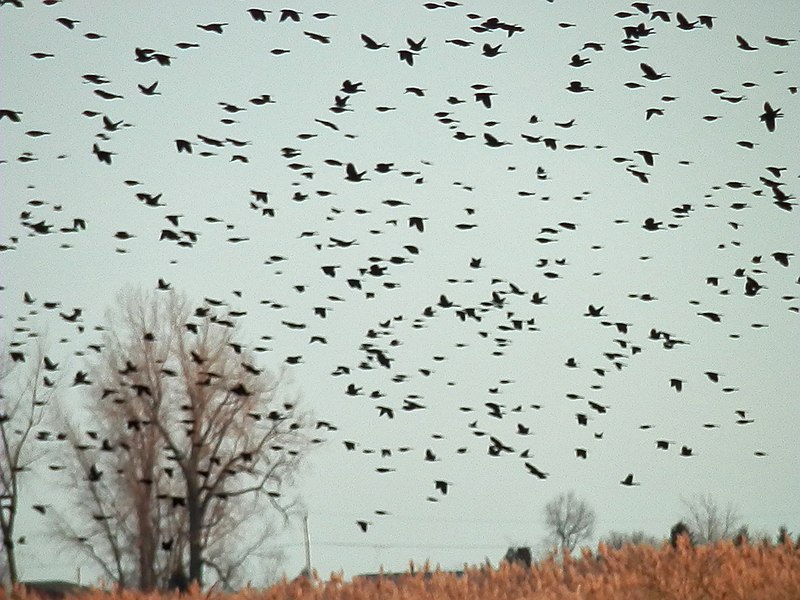
A project by the Drought Monitoring Centre is now embracing traditional weather indicators like bird flights to find scientific interpretation of weather as changes in weather alters traditional scientific weather forecasting.
Traditional ways of forecasting are still the major source of information on weather and climate patterns for farmers. However, increased variability associated with climate change has reduced their confidence in traditional knowledge. Scientific weather forecasts, on the other hand, are formulated on a much larger scale and are presented in a way that is unfamiliar to farmers. This makes it difficult to get farmers to use climate outlooks generated by the Centre and the Kenya Meteorological Department.
When the magungu bird flies higher in the sky than usual and seems to float in the air in its passage from south to north, the Abasuba people living on the islands of Kenya’s Lake Victoria and on the highlands near the lake know the rains are on their way and that it is time to plant.
To scientists, this flight pattern could be associated with the movement of the inter-tropical convergence zone. The Lake Victoria basin falls in an area of deep convection, which might explain the high flight. Integrating traditional and scientific indicators, industry players say, can provide vital information for understanding climate variability, particularly in areas where meteorological stations do not exist. Together they have been known to provide farmers and fishermen with a more accurate and understandable picture which will enable them to make decisions about when to plant and irrigate, and when to go out into the lake.
Related News: Machakos farmer embraces bees for climate change resilience
Related News: Arid land farmers use simple techniques to beat climate change
The Drought Management Centre brought together clansmen from four traditional groups across Kenya and through workshops documented the indigenous indicators. The workshops brought to light the traditional indicators that have been handed down through generations: from the patterns of stars, shadows, and the direction of the wind and clouds to the flowering of trees and the behaviour of birds, insects and bees. Spiders are often the first to signal a change in the weather. They weave their webs against the wind in anticipation of the insects that will come their way.
The indicators vary between locations and communities. When certain clusters of stars appear bright and are surrounded by a halo, the Kamba people expect the rains to be good. When the star clusters are dull, the rains will be poor. When the bees fly north, the Akamba expect good rains. When they fly south, there will be less rain. When two streams of lightning meet on the horizon at Ngundi Mwita on the Yatta plateau, the coming rains will be good. When they meet high in the sky, the rains fail.
When the amaryllis flowers appear, the Luo people expect rain in a week. If the flowers are white, it will be a season of plenty of rain, when they are pink there will be less rain. When the orembe plant sheds its red flowers, the rainy season is about to begin. The water lily (nyabend-pi) is interesting because, even though it lives in water, it only flowers when the rains are about to start.
When the ivtavuti and kanyange birds call during the rain, it means the rains will continue. During the rain, the daily rainfall can be predicted by the changing call of the robin chat (semirufa). Many birds also change their calls according to the season. To the Abasuba people, frequent water spouts over Lake Victoria are a clear sign of rain to come.
Central to the indigenous indicator system are ‘rain makers’, respected clan members who study the wind, cloud patterns, changes in plants and the behaviour of snakes before they can ‘make’ the rain. The project included rainmakers taking scientists to a hidden shrine in the forest where the rainmaker chooses an appropriate time to make the rain.
As well as finding what the indicators mean in scientific terms, scientists are attempting to convey their meteorological predictions through the terminology of indigenous predictions so that they will resonate with local farmers. They hope also that traditional forecasters will form a focal point for the dissemination of climate information to rural communities. Traditional indicators are well understood in communities and widely discussed, while scientific forecasts are scarcely available and hardly used.
“We have noticed that these traditional indicators have a high scientific value that could be integrated with the local climate information,” says project coordinator Professor Laban Ogallo. “This project has also enabled close interaction between the meteorological community and the clan heads in providing climate information to the local people.”
Related News: Drought tolerant Red Maasai sheep insulate farmers from climate change
The traditional indicators not only predict the weather, but help communities adapt. Farmers interpret a set of signals and adjust accordingly: the appearance of a star the Luo call ‘rip’, for instance, means it is time to plant drought-resistant crops such as pumpkin, cassava, sorghum and millet and to preserve food through traditional methods. The calls of certain birds such as the tel tel and ondiek ti ochiem sounded like and are interpreted as instructions such as ‘why don’t you plant. Strengthening these practices could enhance the resilience of communities which are most vulnerable to climate change.
Fishermen on the lake have also relied on traditional forecasts to determine the movement of fish and to predict storms that would capsize their boats and endanger their lives.
“The glaring gap between the traditional forecaster and modern climate scientists, and the recognition of the importance of weather and climate information for enhancing food security in Kenya, prompted the need to study the traditional forecasting methods with the aim of determining their scientific value and initiating collaboration with the traditional forecasters,” said Joseph Mukabana, director of Kenya Meteorological Services.